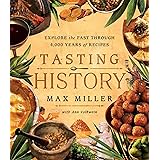The remarkable benefits of raw milk and its derived products are often overlooked in mainstream nutritional discussions. A critical review of infant nutrition highlights this gap: it is widely acknowledged that breast milk is the gold standard, providing comprehensive immunological and developmental support, significantly reducing risks for conditions such as sudden infant death syndrome, obesity, diabetes, and allergies. Our bodies are undeniably designed for this initial, species-specific nourishment. This naturally begs the question: if nature designs such a perfect food, why do processed dairy products from other mammals often present digestive challenges or seem to lack vital elements? The video above thoughtfully explores these discrepancies, particularly focusing on the crucial distinctions between raw and processed milk. This article delves deeper into the scientific mechanisms and profound nutritional advantages that position raw milk as a compelling alternative for the health-conscious consumer.
Understanding the Detrimental Impact of Pasteurization
Pasteurization, a process designed to eliminate pathogenic bacteria through heat treatment, fundamentally alters milk’s biological composition. While historical concerns about diseases like tuberculosis warranted such measures in an era of poor sanitation, modern dairy farming with stringent health protocols for cows in healthy environments offers a different context. However, the pasteurization process itself is far from benign; it sterilizes the milk by killing bacteria, yet the remnants of these dead microorganisms remain, contributing to a biological load that can still impact the digestive system.
More critically, pasteurization denatures delicate proteins and enzymes that are crucial for human health. Milk contains an astonishing array of biomolecules, including over 2,500 different types of proteins and numerous enzymes. Heat exposure during pasteurization irrevocably alters their three-dimensional structures, rendering them functionally inert. For example, lactoperoxidase, an enzyme with potent antibacterial properties that naturally protects milk, is destroyed. Similarly, lactoferrin, a protein essential for immune function that sequesters iron, thus starving pathogens, is compromised. Antibodies, vital for passive immunity, also succumb to heat, stripping milk of its natural immune-boosting capabilities.
Furthermore, pasteurization eradicates beneficial lactase-producing bacteria. These microorganisms are responsible for generating lactase, the enzyme that breaks down lactose, the primary sugar in milk. Consequently, individuals with lactose intolerance, whose bodies do not naturally produce sufficient lactase, often experience digestive distress from pasteurized dairy. In contrast, raw milk retains these beneficial bacteria and their inherent lactase enzymes, making it a potentially more digestible option for many. The removal of these natural digestive aids transforms milk from a biologically active food into a sterile, enzyme-deficient product.
Homogenization: A Further Compromise to Nutritional Integrity
Beyond pasteurization, homogenization is another industrial process that significantly diminishes milk’s inherent value. This mechanical treatment forcibly breaks down fat globules into minuscule particles, preventing the cream from separating and creating a uniform texture. While achieving a desired consistency, homogenization also disrupts the integrity of the milk’s rich lipid profile.
Raw milk boasts an impressive diversity, containing approximately 400 different types of fatty acids, many of which are vital for cellular function and overall health. Homogenization damages these delicate fatty acid structures, potentially altering their bioavailability and metabolic pathways. One notable casualty is the Wulzen factor, also known as the “anti-stiffness factor.” Though its complex chemical name is often simplified, this lipolytic enzyme is understood to possess anti-inflammatory properties, particularly beneficial for joint health and conditions like rheumatoid arthritis, specifically targeting stiffness in areas such as the wrists. The destruction of such a potent factor underscores how processing can strip milk of its unique therapeutic compounds.
The Historical and Modern Case for Raw Milk Benefits
The historical record reveals a profound appreciation for raw milk’s therapeutic properties. Early in the 20th century, before widespread pasteurization, raw milk was routinely utilized in clinical settings for a wide range of ailments. Physicians and naturopaths observed its efficacy in treating ulcers, various gastrointestinal problems, systemic inflammation, allergies, gout, gum disease, and even asthma. This traditional wisdom points to a holistic understanding of raw milk as a complete food, rich in bioavailable nutrients and bioactive compounds that support the body’s natural healing mechanisms.
Today, this perspective is gaining renewed traction among those seeking natural approaches to health. Raw milk contains highly bioavailable calcium and a full spectrum of fat-soluble vitamins (A, D, E, K2), which are better absorbed due to their natural co-factors. Additionally, it retains enzymes like alkaline phosphatase, which possesses significant anti-inflammatory actions. These components work synergistically, contributing to enhanced gut health, robust immune function, and reduced systemic inflammation. The living enzymes and beneficial bacteria in raw milk can help to rebalance the gut microbiome, improving digestion and nutrient assimilation, which in turn positively impacts various physiological systems.
Beyond Raw Milk: The Power of Fermented Dairy Products
For individuals who may not consume raw milk directly, or who seek additional probiotic support, raw milk products, particularly those that are fermented, offer an exceptional pathway to these benefits. Fermentation amplifies the nutritional profile and introduces a vast array of beneficial bacteria and yeasts, further enhancing gut health. Raw milk cheese, kefir, and yogurt are prime examples.
Kefir, in particular, stands out for its extensive probiotic diversity, often containing a wider range of beneficial bacteria and friendly yeasts than yogurt. The fermentation process predigests lactose, making these products even more suitable for individuals with lactose sensitivities. These fermented forms retain many of the original raw milk components, including bioavailable calcium, fat-soluble vitamins, and beneficial enzymes, while simultaneously producing new beneficial compounds through microbial action. Regular consumption of such products can significantly contribute to a balanced gut microbiome, which is foundational for immune health, mental well-being, and overall vitality.
A1 Versus A2 Milk: Understanding Casein Protein Variants
When considering dairy consumption, beyond processing methods, the genetic origin of the milk source itself warrants attention. The difference between A1 and A2 milk lies in a specific protein called casein. Most conventional dairy products available globally are sourced from cows producing A1 beta-casein, a protein variant that, upon digestion, releases a peptide called beta-casomorphin-7 (BCM-7).
Research suggests that BCM-7 may contribute to digestive discomfort, including bloating and gastrointestinal inflammation, in some individuals. In contrast, A2 milk, typically sourced from heritage breeds or specific A2-producing cow herds, contains A2 beta-casein. This variant is digested differently, without the release of BCM-7, and is often perceived as easier on the digestive system, leading to less bloating and inflammatory responses. Prioritizing A2 milk, if available, can therefore be a significant factor in mitigating potential digestive issues associated with dairy consumption.











